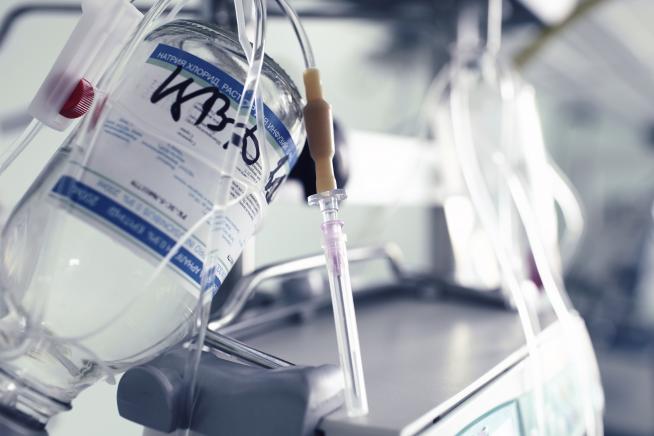Feeding critically ill trauma patients: Searching for the perfect alchemy

ARTICLE REVIEW
In their article in the current issue of Intensive Care Medicine Kagan et al. tackle the the role of preemptive enteral nutrition enriched with eicosapentaenoic acid (EPA), gamma-linolenic acid (GLA) and antioxidants (AO) in critically ill multiple trauma patients[1].
Given that such enriched nutritional approach was shown improve outcomes in patients suffering from ARDS [2][3] and severe sepsis/septic shock[4], the authors conducted a double-blind, parallel-group, randomised-controlled trial (RCT) to investigate whether a preemptive optimised feeding strategy including EPA, GLA and AO, as compared to a conventional nutrition protocol, could yield any respiratory benefit in trauma patients requiring mechanical ventilation. The analysis of the results showed that the RCT failed to detect any significant difference concerning oxygenation, the rate of incidence of ARDS and the length of mechanical ventilation. Nevertheless, this study provides useful evidence regarding care of the critically ill trauma patient as revealed through delving further into the authors’ findings.
Firstly, while the previously cited RCTs [2][3][4] and the INTERSEPT study[5] identified the benefits of enriched nutrition in cohorts of patients suffering from either ARDS or sepsis/septic shock, none of them tested the efficacy of this protocol before the onset of the disease. In fact, the present study did not show any prophylactic role of such an approach in terms of ARDS prevention. It is reasonable to suggest that EPA, GLA and AO have an immunomodulatory effect mainly over the course of inflammation, while other factors play a more relevant role at the onset and during the early phase of inflammatory response. For instance, Raymondos and co. demonstrated that higher IL-8, IL-6, TNF-a, IL-1b, IL-10 concentrations in bronchoalveolar lavage immediately after trauma make mechanically ventilated patients more prone to develop ARDS during the critical illness[6]. Data on such cytokines would have allowed stratifying patients according to the risk of ARDS development and would have provided us clarifying insights for discussing the results.
Secondly, the relatively low proportion of enrolled patients (32/99) that developed ARDS over the course of the study may have weakened the effect of the study treatment. Even though the small sample hampers any speculation on the results, it would be challenging to investigate whether and to what extent the disease severity in this subgroup of patients was affected by treatment assignment.
Thirdly, as noticed by the authors, since the final study population is 18% lower than the sample estimated during power analysis, the study may have been underpowered.
Finally, the authors chose a primary end-point that rates the severity of pulmonary dysfunction, but more than two-thirds of enrolled patients did not show any kind of respiratory impairment. While PaO2/FioO2 ratio is a robust endpoint in critically ill patients with acute respiratory failure, it may behave as a misleading outcome measure for the comparison of different nutrition protocols in such a heterogeneous population of trauma patients. It could be argued that a more specific end-point would have provided different results.
In conclusion, further physiological studies focusing on precise nutritional outcomes and a larger RCT with a robust primary end-point are warranted to highlight the possible benefits of optimised nutritional strategies in critically ill trauma patients.
This article review was prepared and submitted by ESICM NEXT member Domenico Luca Grieco.
References
[1] Kagan I, Cohen J, Stein M, et al. (2015) Preemptive enteral nutrition enriched with eicosapentaenoic acid, gamma-linolenic acid and antioxidants in severe multiple trauma: a prospective, randomised, double-blind study. Intensive Care Med. doi: 10.1007/s00134-015-3646-z
[2] Gadek JE, DeMichele SJ, Karlstad MD, et al. (1999) Effect of enteral feeding with eicosapentaenoic acid, gamma-linolenic acid, and antioxidants in patients with acute respiratory distress syndrome. Enteral Nutrition in ARDS Study Group. Crit Care Med 27:1409–1420. doi: 10.1097/00003246-199908000-00001
[3] Singer P, Theilla M, Fisher H, et al. (2006) Benefit of an enteral diet enriched with eicosapentaenoic acid and gamma-linolenic acid in ventilated patients with acute lung injury. Crit Care Med 34:1033–1038. doi: 10.1097/01.CCM.0000206111.23629.0A
[4] Pontes-Arruda A, Aragão AMA, Albuquerque JD (2006) Effects of enteral feeding with eicosapentaenoic acid, gamma-linolenic acid, and antioxidants in mechanically ventilated patients with severe sepsis and septic shock. Crit Care Med 34:2325–2333. doi: 10.1097/01.CCM.0000234033.65657.B6
[5] Pontes-Arruda A, Martins L, de Lima S, et al. (2011) Enteral nutrition with eicosapentaenoic acid, ?-linolenic acid and antioxidants in the early treatment of sepsis: results from a multicentre, prospective, randomised, double-blinded, controlled study: the INTERSEPT Study. Crit Care 15:R144. doi: 10.1186/cc10267
[6] Raymondos K, Martin MU, Schmudlach T, et al. (2012) Early alveolar and systemic mediator release in patients at different risks for ARDS after multiple trauma. Injury 43:189–95. doi: 10.1016/j.injury.2011.05.034